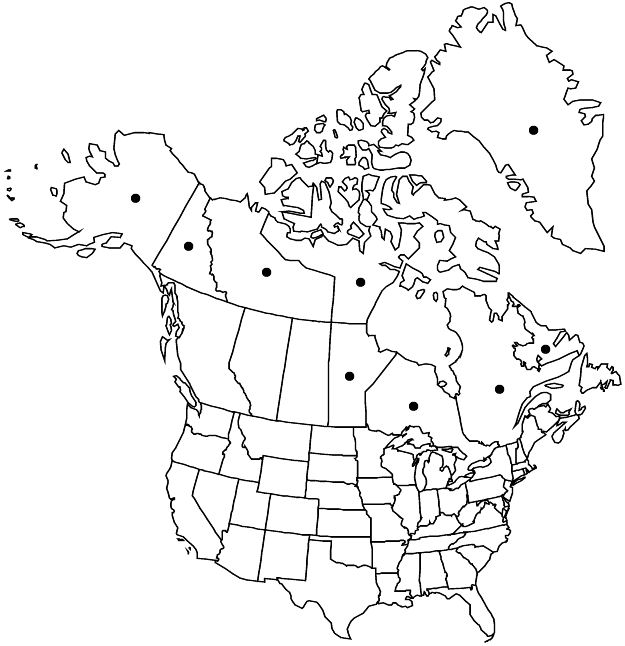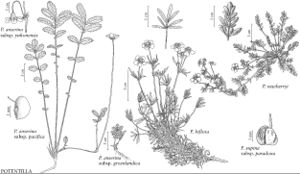Potentilla anserina subsp. groenlandica
Rosac. Monogr. 4: 13. 1824.
Stems glabrous. Leaves horizontal or ascending, rarely erect, (1–)2–10 cm, rarely longer; leaflets 2–4(–5) per side, separate, teeth 2–6(–10) per side, teeth apex rounded to subacute, surfaces: abaxial with long hairs absent or sparse, on veins, cottony-crisped hairs absent, sometimes sparse to dense, adaxial glabrous. Flowers 0.8–1.5 cm diam.; epicalyx bractlets narrowly to broadly ovate-triangular, shorter than sepals, entire; hypanthium patelliform (wider than deep) in fruit; petals not overlapping, elliptic; carpels 25–60. Achenes without dorsal groove. 2n = 28, 35, 42.
Phenology: Flowering summer.
Habitat: Salt and brackish marshes, clayey and sandy seashores, driftwalls
Elevation: 0 m
Distribution

Greenland, Man., Nfld. and Labr. (Labr.), N.W.T., Nunavut, Ont., Que., Yukon, Alaska, Eurasia.
Discussion
The northern arctic plants have glabrous leaves and are compatible with Potentilla egedei. Some of the southern arctic and northern boreal plants in the Atlantic regions have leaves with white-hairy abaxial surfaces, more leaflets, often more pointed teeth, and slightly larger flowers. These are compatible with subsp. groenlandica as originally described. The variation between these extremes is continuous. Both names are based on plants from Greenland, far north of the native range of subsp. anserina, and are probably the same entity. Following the argument by J. Soják (1969) that trinomials by Trattinnick are subspecies, the epithet groenlandica has priority over egedei at this rank.
Selected References
None.
